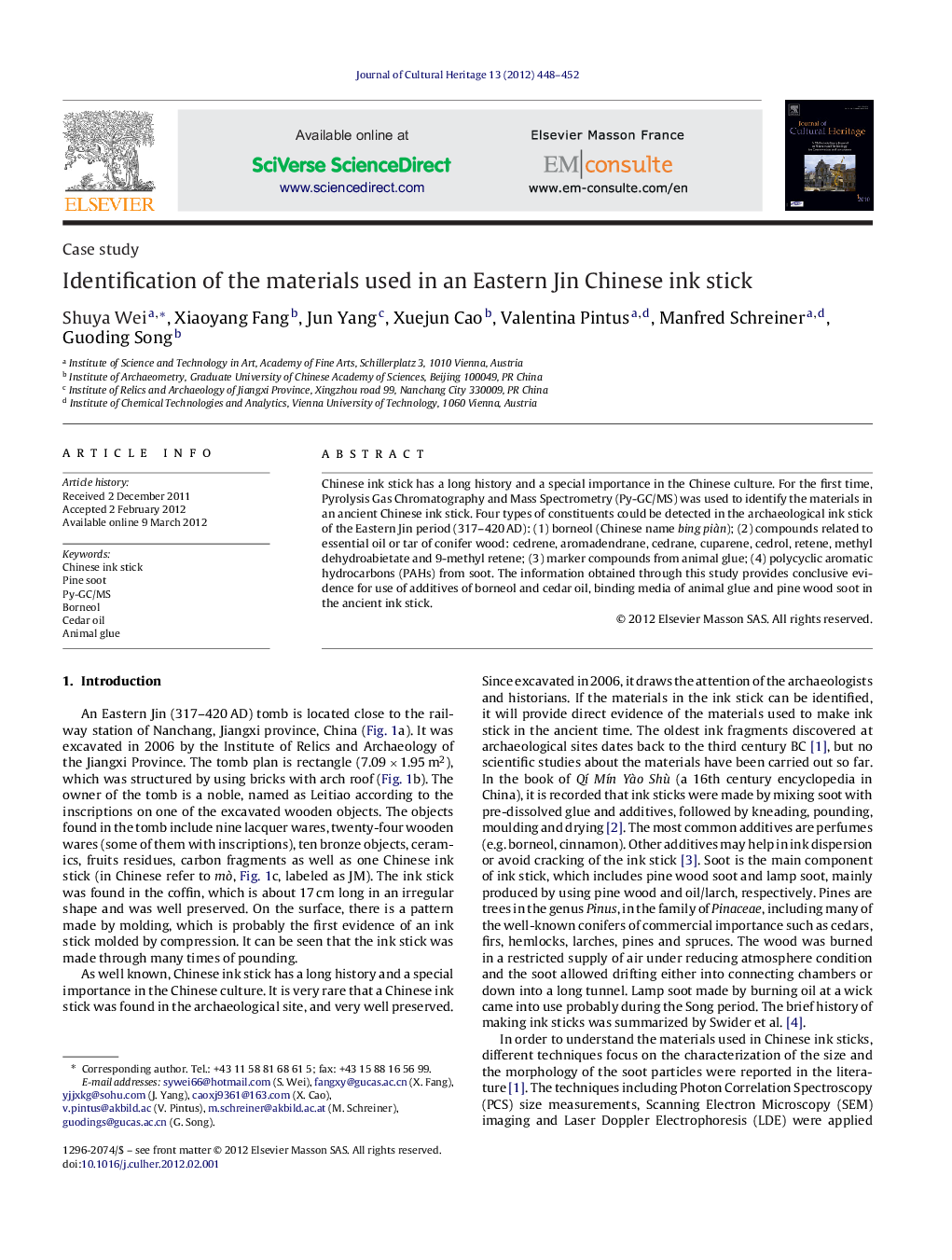| کد مقاله | کد نشریه | سال انتشار | مقاله انگلیسی | نسخه تمام متن |
|---|---|---|---|---|
| 1038451 | 944220 | 2012 | 5 صفحه PDF | دانلود رایگان |

Chinese ink stick has a long history and a special importance in the Chinese culture. For the first time, Pyrolysis Gas Chromatography and Mass Spectrometry (Py-GC/MS) was used to identify the materials in an ancient Chinese ink stick. Four types of constituents could be detected in the archaeological ink stick of the Eastern Jin period (317–420 AD): (1) borneol (Chinese name bing piàn); (2) compounds related to essential oil or tar of conifer wood: cedrene, aromadendrane, cedrane, cuparene, cedrol, retene, methyl dehydroabietate and 9-methyl retene; (3) marker compounds from animal glue; (4) polycyclic aromatic hydrocarbons (PAHs) from soot. The information obtained through this study provides conclusive evidence for use of additives of borneol and cedar oil, binding media of animal glue and pine wood soot in the ancient ink stick.
Journal: Journal of Cultural Heritage - Volume 13, Issue 4, October–December 2012, Pages 448–452